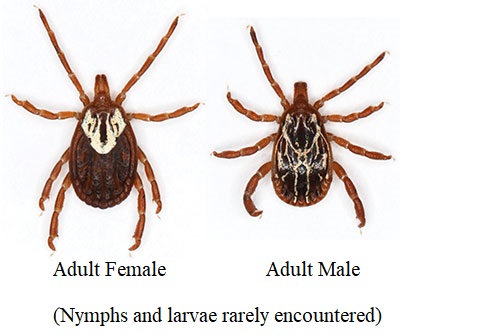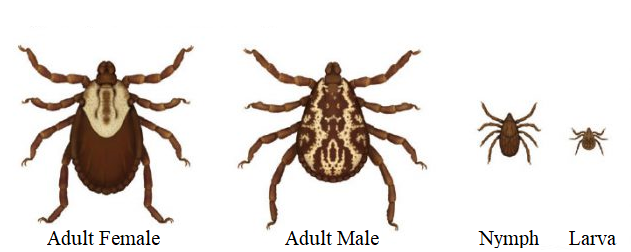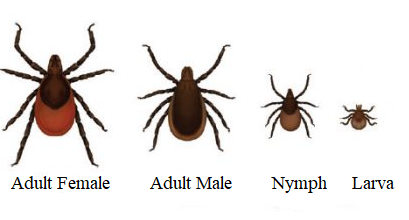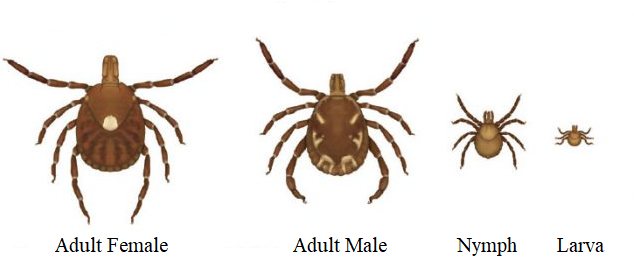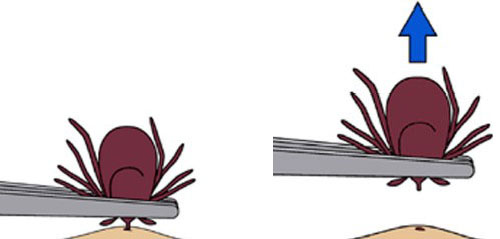
Spring has sprung, and so have ticks – right onto the pant legs and socks of unsuspecting victims all over the state of Delaware.
According to Dr. Ashley C. Kennedy, Delaware is sixth in the nation for incidences of Lyme Disease and in the top 10 for Rocky Mountain Spotted Fever. But that’s not all, she told farmers during the annual Delaware Ag Safety Conference held in March at Loblolly Acres. Delaware also ranks in the top five states for Ehrlichiosis, another disease caused by bacteria transmitted to humans and animals through bites by an infected tick.
Despite the large number of disease incidents in Delaware resulting from tick bites, Dr. Kennedy said tick literacy continues to be low in the First State, even amongst healthcare professionals.
“According to a 2017 study, only 38% of Delawareans feel that ticks are a problem,” she explained. “Only 13% strongly agree that Lyme Disease is a problem in Delaware.”
Lyme Disease can cause temporary symptoms such as fever or a rash near the bite site and lifelong complications such as joint stiffness, muscle aches, neurological problems and cardiac concerns. Tick literacy and early prevention and detection are key to avoiding the more severe symptoms for any tick-borne illness.
“Protecting yourself from ticks and tick-borne illnesses really is about knowing the habits of ticks and how to detect a problem,” Dr. Kennedy said, adding that ticks can be found year round in Delaware.
“We don’t really have a season anymore,” Dr. Kennedy added. “It’s still higher in the late spring and summer, but you can even find ticks all year long, unfortunately.”
Tick prevention tips
- Stay on trails and stay away from tall grass and other vegetation
- Conduct frequent and regular tick checks after being in a tick habitat
- Check hard to see spots like inside the belly button, in and around ears, between legs, under arms and in hair
- Remove ticks promptly
- Remember that some tick species can thrive in meadows, pastures, fields, and even wetlands and lawns
Tick detection and handling tips
- Use fine-tipped tweezers to grasp the tick as close to the skin’s surface as possible
- Pull upward with steady, even pressure
- Do not twist or jerk the tick; this can cause the mouth-parts to break off and remain in the skin
- After removing the tick, thoroughly clean the tick bite area and your hands with rubbing alcohol or soap and water
- Save the tick for identification
- Check for more ticks
Tips for keeping a yard or farm safe from ticks
- Remove invasive vegetation such as multiflora rose, Japanese barberry, oriental bittersweet, and Amur and Japanese honeysuckle
- Keep grass short
- Remove leaf litter and brush piles
- Reduce groundcover
- Widen trails and create barrier strips
- Trim branches to let in more sunlight
When ticks are found, Dr. Kennedy asks that photos be submitted to de.gov/ticks. Upon receiving photos, the state can help identify the tick species and life stage to help the submitter evaluate risks and next steps. Ticks can also be sent to the state for identification.
“I know it’s one more thing to add to your list, but it is really, really important to try to avoid these diseases by staying clear of ticks,” she told the group during the safety conference.
Some of the known tick species found in Delaware include the Lone Star Tick, Gulf Coast Tick, American Dog Tick, Rabbit Tick, Groundhog Tick, Squirrel Tick and Brown Dog Tick.
For more information about the Delaware Farm Bureau, visit www.defb.org. Dr. Kennedy can be reached at www.de.gov/ticks or by email at ashley.kennedy@delaware.gov.
